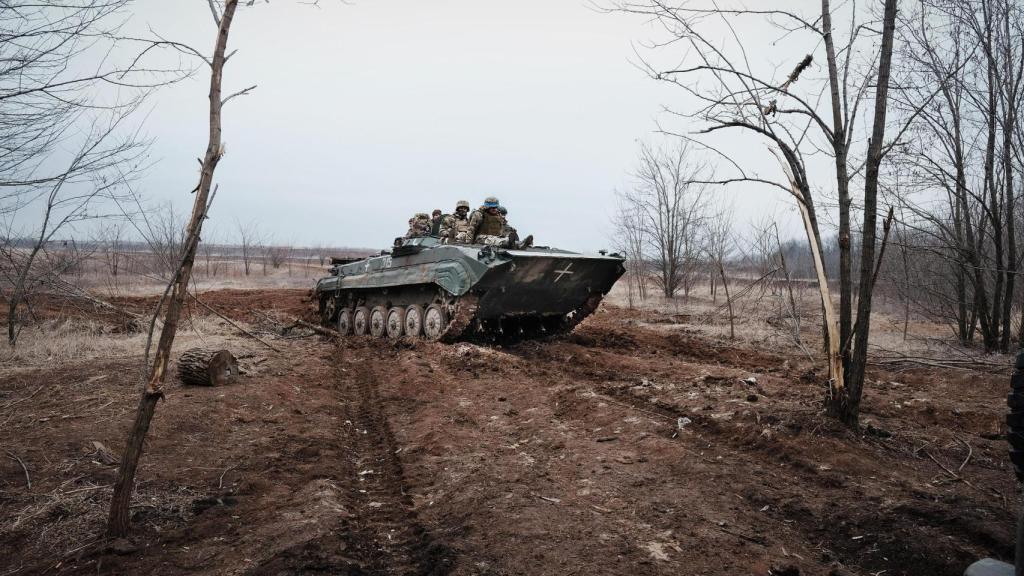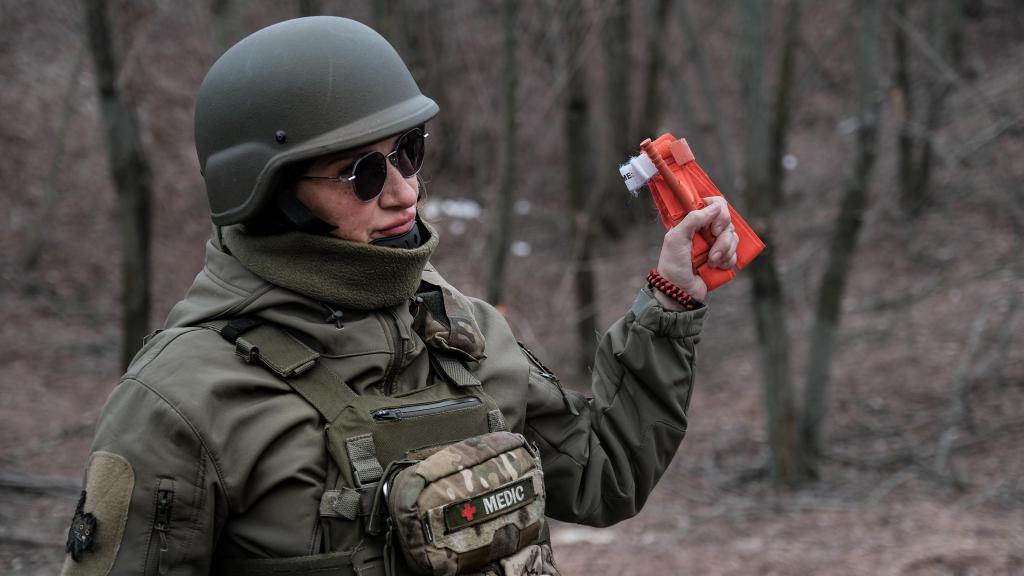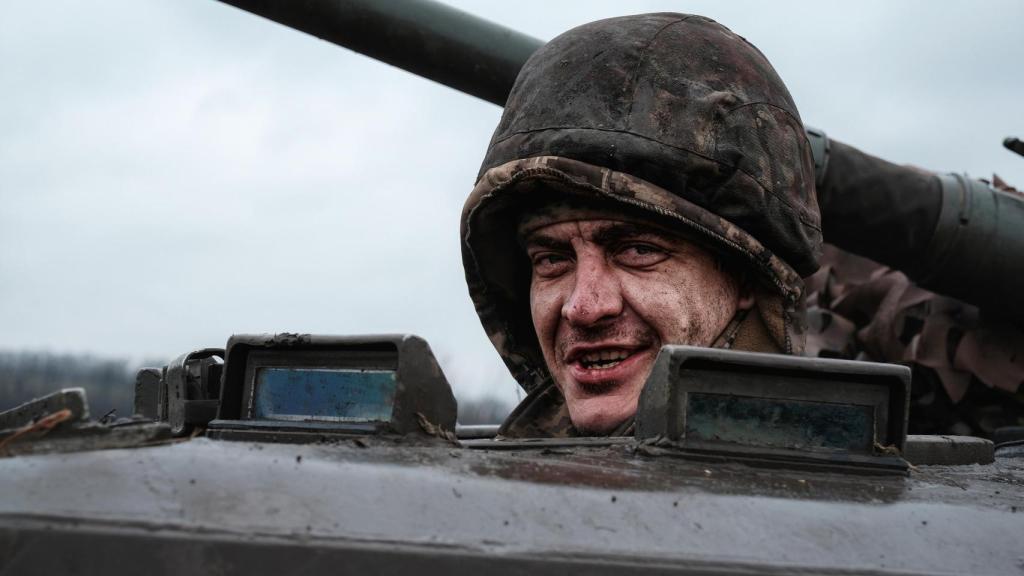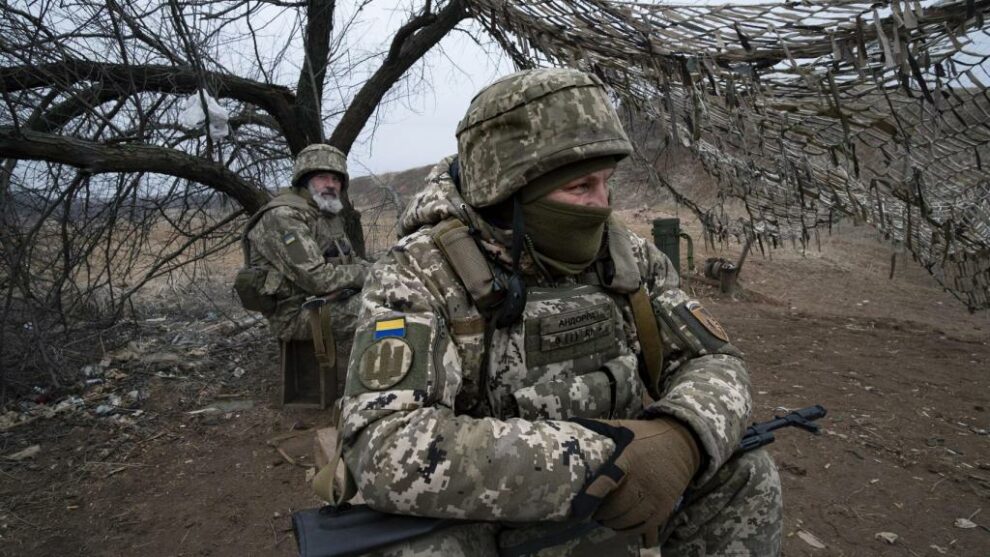Arthur is 26 years old and was already a soldier when the full-scale war began in Ukraine, but I find him training in a Donetsk training groundvery close to the disputed city of Chasiv Yar. “There have been so many changes since the invasion began… we have had to adapt to the real war scenarios that the enemy has created and now we are learning from that. We learn how the enemy acts,” he explains.
From this forced learning, which Arthur summarizes, a series of important changes at the military level have been distilled that have modified the structure of the Ukrainian Army so much –which has created new brigades and integrated paramilitary forces into them–, as well as its action protocols, increasingly distant from Soviet doctrines.
He Ukrainian Army has become the largest in Europeand in which it handles the largest number of weapons references: some 600 different types of weaponscoming from different countries and eras – which they have had to learn to drive in record time.
Exact figures are not published in wartime, but it is estimated that the Ukrainian Armed Forces They have mobilized a million people. More than 300,000 work on the front lines, and many of these troops – of those who are still alive – have learned to fight, fighting. With hardly any prior training.
That’s why now They strive to professionally train new soldiers that they have to relieve the veterans and maintain the combat fronts of a war that is not going to end tomorrow – although these days a road map for peace is being addressed at the international level.
Syrsky wants changes
The new commander-in-chief of the Ukrainian Armed Forces, General Syrskyis also trying to make the instruction given today the best possible, aware that better training saves lives – and that right now they cannot afford to lose more than is strictly necessary.
Soldiers of the 22nd Brigade, during Infantry training in the north of Donetsk.
In recent months, under his command, a mandatory four-week basic training program –common for all Army and Territorial Defense bodies–, which includes the use of military-grade weapons, tactical medicine courses, training in battlefield scenarios and resistance to enemy propaganda.
But reality, after this basic training, is not so homogeneous nor is it common for all bodies. In the same training camp where I speak with Arthur, I meet young people who have been training for two months, and others who are adding more than eight because they had previously specialized in other capacities. All together, receiving the same training.
“That’s not bad, because veterans help rookies“, says one of the instructors of the 22nd Brigade. “The same thing happens with the combatants who arrive after having received training in a country in the European Union, who then share that knowledge with their colleagues,” he adds.
NATO standards
Over the past two years, tens of thousands of Ukrainian servicemen have already received specialized training in NATO countries –including Spain, where more than 4,000 have already passed through–. They are instructed in the use of the weapons systems that the allies have sent to kyiv, also in specialties such as sniping, and in combat medicine.
And now it is going to go one step further with the sending of Western instructors to Ukrainian soil. The presidents of France and the United States, Emmanuelle Macron and Joe Bidenthey officially announced it this June, and everything indicates that more countries will join in the future.
In the agreement they have signed Zelensky and Biden – just a few days before the start of the Peace Summit which brought together 100 countries this weekend in Switzerland – the US president committed to sending instructors and weapons for the next 10 years. Something that reestablishes that feeling that the war in Ukraine is going to last a long time.

Soldiers of the 22nd Brigade, aboard an Infantry fighting vehicle, in Donetsk.
In the case of Spain –one of the countries that contribute the least resources to the Atlantic Alliance–, the quality of its instructors in international missions has been highly valued in all the scenarios in which they have participated. And although at the moment the Minister of Defense, Margarita Robleshas not commented in this regard, we cannot rule out that they also join this initiative.
combat medicine
Meanwhile, on Ukrainian soil, they are striving to reinforce several fields of knowledge that are crucial at this time of the war: training in drones – which are increasingly having more weight on the combat front – and tactical medicine training are two of these aspects.
One of the most common problems that were seen in the trenches, in the first months of the war, was the lack of knowledge of soldiers when, for example, putting on a tourniquet – something that saves lives on the battlefield. Many of these soldiers carried Chinese tourniquets used for practice in their bulletproof vests, and they did not even know how to recognize them. The sad reality is that, when they had to use them, they broke when squeezed; with fatal consequences for the injured person.

Vistoria, one of the combat medicine instructors of the 22nd Brigade, during one of her training classes.
Today the panorama is completely different, and training in combat medicine has improved substantially – both in basic instruction and in that provided by each brigade in a second phase. “Now in all Ukrainian brigades they are receiving health training before starting rotation: either they have their own instructors or they receive private companies that teach the Tccc course,” explains Suso, a Spanish paramedic who enlisted as a volunteer combatant in the 3rd Assault Brigade.
“When you overcome the Tccc course, where they teach you how to use the ifak (combat first aid kit), how to move a wounded person, etc. They give you a qualification, and then the most advisable thing is for the paramedics of each unit to refresh the soldiers’ health knowledge from time to time,” he adds. “I I put a lot of emphasis on teaching them how to stop bleeding“, putting a good bandage and the use of tourniquets.”
“Paramedics also receive advanced courses from time to time: they are taught by a private company, They last a couple of days or threeand they teach us things like how to use ultrasound machines or do a tracheotomy,” he adds.
Common criteria missing
One of the problems that they have not yet been able to remedy is the lack of homogeneity in this second phase of training, which the soldiers must receive in the brigade where they join – preferably before going to the combat front. An issue that has worsened with the controversial Mobilization Lawand the lack of motivation on the part of those men who have been forcibly recruited
Since the new law came into effect – barely a month ago – more and more testimonies have been heard from new recruits who are sent to the front as soon as they finish the month of mandatory basic training, and they no longer receive instruction. On paper, it is stipulated that they must continue training them, but the reality is that each commander applies his own decisions with the men and women under his command in matters of training. And in the end the differences are great.
Brigades such as number 12 – where Azov is now located – boast of providing very complete training, following NATO protocols from beginning to end. The training they provide in the assault brigades and in some infantry brigades, such as the 22nd Brigade where I find Arthur, also has a good reputation.

A Ukrainian recruit learns to drive a BMP armored vehicle near the Donetsk front.
However, international combatants assure that the lack of specialized instruction is very worrying in the majority of battalions of the Territorial Defense and the International Legion. “If you are a foreigner and you already have an agreement to join a battalion before arriving in Ukraine, you do not receive the 30-day basic training,” clarifies the Commander Chaparroat the head of the Bolívar Battalion where only foreigners serve, the majority Spanish-speaking.
“In the brigade itself they will rate you when you sign the contract, taking into account your previous military experienceand then you will only go through a course that is according to the special military operations of the battalion, for example: drones, clearing mines, etc.,” he continues.
In his battalion, Chaparro makes sure the men receive the necessary training, but in the end it is up to the commander of each unit and the haste to fill the positions on the combat front. Hence the lack of homogeneity. A problem that results in many foreign fighters breaking contracts when they see that they are sent to the front line without adequate training to survive, and look for a new, better organized battalion.
The military training that Ukrainians who put on the uniform now receive – voluntarily or forced – has nothing to do with what they received in 2022. The Ukrainian Army continues to work to change the improvisation of the first stages of the war for Western combat doctrines. But with the pressing need to relieve frontline veterans – who are already showing significant fatigue –, sometimes not enough time is dedicated to this issue.
In the last 28 months, Zelensky’s Armed Forces They have done an intensive master’s degree in “real war” –which right now no other army in Europe has–. But the price they have paid translates into tens of thousands of dead, maimed and missing in action. And they don’t know how much longer they will have to resist. The arrival of international instructors and the effort to improve their training for the coming years can save thousands of lives.








![[Img #74675]](https://thelatestnews.world/wp-content/uploads/2024/12/They-discover-a-new-class-of-X-ray-sources-in-the-150x150.jpg)




Add Comment